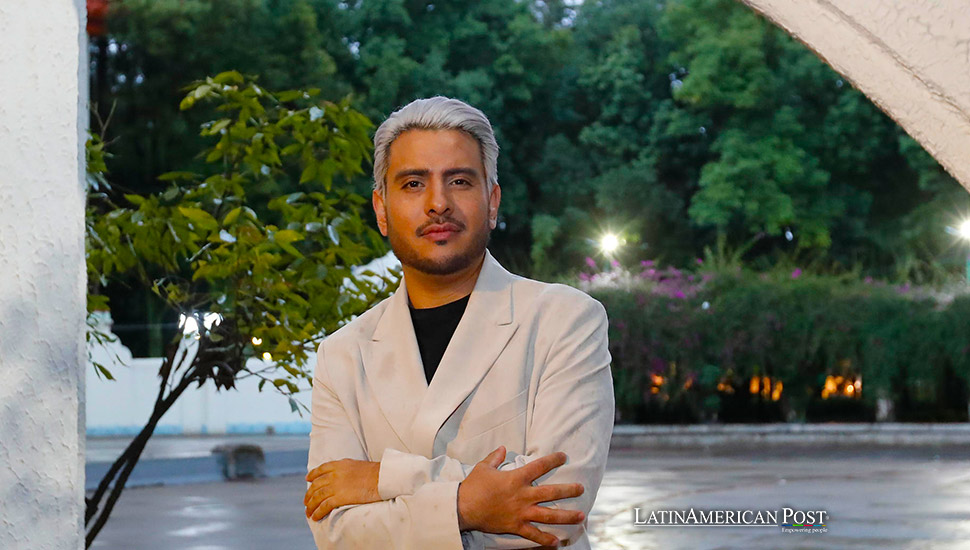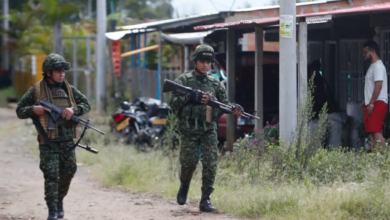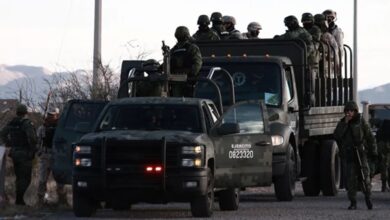The Deadly Flow: U.S. Guns Fuel Mexico’s Violence

The documentary “Río de Armas, Dinero y Muerte,” by Mexican filmmaker Víctor Valles, exposes the staggering influx of firearms from the United States into Mexico. This investigative work delves into the origins of the weapons trade and its deadly impact on Mexican society.
In his gripping documentary Río de Armas, Dinero y Muerte (River of Guns, Money, and Death), Mexican filmmaker Víctor Valles sheds light on a devastating issue that has plagued Mexico for over a decade: the relentless flow of firearms from the United States. The documentary, which has garnered a nomination for the prestigious Emmy Award in the category of ‘Outstanding Feature Story in Spanish,’ offers an in-depth exploration of the mechanics behind this lethal trade and its catastrophic effects on Mexican society.
The figures are staggering: an estimated 2.5 million firearms have poured into Mexico from the United States over the past decade. According to data from Mexico’s Secretariat of Foreign Affairs (SRE) and the Secretariat of National Defense (Sedena), approximately 200,000 weapons enter the country annually across the nearly 3,000-kilometer border separating the two nations. This boundary, one of the longest in the world, sees more than a million people and 300,000 vehicles cross daily. But amid this constant flow of human traffic, a far more sinister cargo—firearms—is slipping through the cracks, largely unchecked.
Valles, a journalist with N+ recognized for his investigative work, highlights this alarming reality in his documentary. “There is no filter to prevent weapons from entering our country,” he explains in an interview with EFE. “These weapons make their way from the north to the south of Mexico and even into Central America, with little to no oversight.” The stark contrast in border security measures is evident: while the U.S. side is heavily guarded to prevent the flow of drugs and undocumented migrants, the southbound smuggling of weapons remains a largely unmonitored activity.
The Role of the Mexican Mafia in Arms Trafficking
The documentary delves into the criminal networks that facilitate this deadly trade, establishing direct contact with the Mexican Mafia, a powerful criminal organization operating out of California. According to Valles, members of this group revealed to him how they legally purchase weapons in the United States, often with the help of individuals who can buy firearms without raising suspicion. In other cases, U.S. agents who obtain unreported weapons during operations or raids are implicated in selling these arms to criminal organizations.
The weapons obtained by these groups range from handguns to high-powered assault rifles, all of which are smuggled into Mexico with relative ease due to the lack of robust enforcement. “It’s alarming to see the variety of weapons these organizations can acquire and bring into Mexico,” Valles notes. This unchecked flow of arms equips criminal groups with the firepower needed to maintain their operations and expand their influence across the country.
The documentary paints a vivid picture of the consequences of this arms trade, tracking the journey of these weapons from their entry into Mexico to their final destination in the hands of violent drug cartels, such as the notorious Sinaloa Cartel. The cameras capture harrowing scenes of young recruits—some as young as 16—undergoing military-style training with the very weapons smuggled from the United States. These youths are being groomed to become the next generation of sicarios, or hitmen, in a cycle of violence that seems unending.
Firearms and Rising Violence in Mexico
The impact of the arms trade on Mexico has been nothing short of devastating. During the presidency of Andrés Manuel López Obrador (2018-2024), Mexico witnessed approximately 134,000 homicides involving firearms, with around 70% of these deaths attributed to weapons smuggled from the United States. The documentary highlights the stark reality of a country awash in illegal firearms, where criminal organizations are often better equipped than law enforcement agencies.
One of the most chilling examples of this was the 2019 incident known as the “Culiacanazo,” in which the Sinaloa Cartel launched a violent uprising in the city of Culiacán following the attempted arrest of Ovidio Guzmán, son of the infamous drug lord Joaquín “El Chapo” Guzmán. The cartel’s firepower, much of it derived from smuggled U.S. weapons, allowed them to overpower Mexican security forces and eventually secure Guzmán’s release. “The sheer number of firearms in the hands of criminal groups in Mexico is staggering,” Valles remarks. “We saw it firsthand during the Culiacanazo. The criminals were armed to the teeth with weapons far superior to what the authorities had.”
The documentary also discusses the limited legal avenues for acquiring firearms in Mexico. Unlike in the United States, where guns are readily available, Mexico has stringent regulations on gun ownership. The Secretariat of National Defense is the only body authorized to sell firearms; buyers must meet strict requirements to obtain them. This disparity has only fueled the demand for illegal weapons, as criminals find it easier to smuggle guns across the border than to get them through legal channels.
Confronting the Cross-Border Weapons Trade
As the documentary Río de Armas, Dinero y Muerte gained international recognition. It also serves as a call to action for Mexican and U.S. authorities. Valles is critical of the Mexican government’s response to the crisis, noting that while officials are aware of the situation, their efforts have been limited to filing a few lawsuits against U.S. gun manufacturers. “The Mexican government knows what’s happening, but they haven’t done enough to stop it,” Valles asserts. “We need more than just lawsuits; we need real action to prevent these weapons from crossing the border in the first place.”
The documentary underscores the need for greater collaboration between Mexico and the United States to tackle the arms trade. It calls for more stringent controls on gun sales in the U.S., particularly in states bordering Mexico, and enhanced cooperation between law enforcement agencies on both sides of the border. Valles also advocates for increased public awareness of the issue, urging Mexican and American citizens to recognize the human cost of the arms trade and pressure their governments to act.
The Emmy nomination for Río de Armas, Dinero y Muerte is a testament to the importance of Valles’ work and the urgent need to address the cross-border flow of weapons. As the documentary reaches a broader audience, it has the potential to spark a much-needed conversation about the responsibilities of both nations in curbing the violence fueled by the arms trade.
Also read: Mexico’s $10 Billion Lawsuit Against U.S. Gun Manufacturers Faces Major Setback
Río de Armas, Dinero y Muerte is more than just a documentary; it is a powerful exposé of the deadly consequences of the unchecked flow of firearms from the United States into Mexico. Through his investigative work, Víctor Valles has highlighted a critical issue that demands immediate attention from Mexican and U.S. authorities. As the documentary continues to gain recognition, it serves as a stark reminder of the human cost of the arms trade and the urgent need for action to stem the tide of violence that has claimed so many lives in Mexico.





